In a discussion on work ethic and aspirations one of my students said that she would like to be an aeronautical engineer. I must admit that I had never heard of an aeronautical engineer and the first thing that came to mind was aeroplane food and the crazy hours of pilots. Which led to me to consider the challenges of booking a date in the midst of a flight schedules.
Around the same time I picked up a book by Fannie Flagg which my mother-in-law was reading. The book was about WASP pilots and the title was The All-Girl Filling Station’s Last Reunion. I have a nasty habit of skim reading the endings and picked up that the fictional story was about a group of sisters who joined the WASPS and how one sister feel in love with an English pilot and secretly had a child and so the drama of the book unfolds.... You can read more at: http://www.amazon.com/All-Girl-Filling-Stations-Last-Reunion/dp/1400065941. What really interested me was the story of how these women fitted into a male dominated career and how this affected their lives. I had also been skim reading a book at Exclusive books titled "The XX Factor by Alison Wolf."
Wolf's analysis on how working women were changing society fascinated me. Thus inspiration struck, and I thought I would love to create a series of sculptures about women at work so I began Google searching images of female aeronautical engineers and discovered a stunning image in
Dorothy Cochrane's article titled Meet the Curtiss-Wright Aeronautical Engineering Cadettes. Dorothy Cochrane is the curator in the Aeronautics Department of the National Air and Space Museum and below are some excerpts from her article.
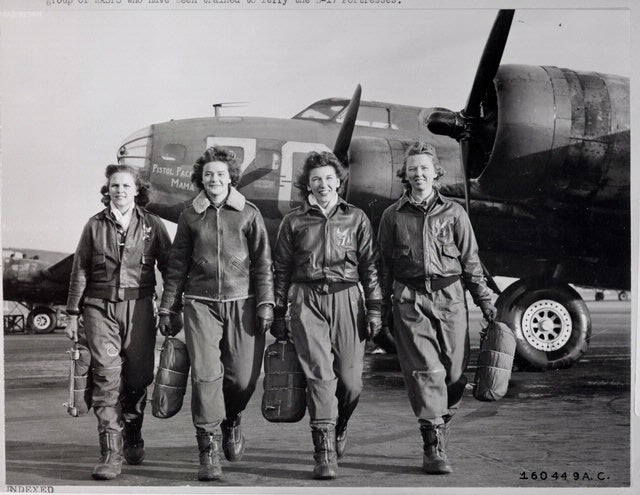
Members of the WASP (Women Airforce Service Pilots) are pictured at Lockbourne Army Air Field in World War II. From left to right are Frances Green, Margaret (Peg) Kirchner, Ann Waldner and Blanche Osborn. The WASP were civilian women pilots who flew in non-combat situations for the U.S. Army Air Forces during the war. The program came to an abrupt end in 1944 because of gender politics.
"Just when I think I might know something about women in aviation, or just when we think we’ve heard all the stories about “the greatest generation,” I find out about another group who contributed to the World War II effort. They were not Rosie the Riveters assembling aircraft on production lines nor were they the pilots known as the WASP. By now, most people have heard of the Women Airforce Service Pilots, 1,074 civilian women who, from 1943 to 1944, flew more than 60 million miles ferrying military aircraft, towing targets, and performing other administrative flying duties for the US Army Air Forces. Thirty-eight women lost their lives in the course of their duties to their country, but deceased or living, they received no military benefits. After being deactivated in December 1944, so that returning male pilots could resume stateside military flight duties, their remarkable story was lost for many years, in fact until 1977 when Congress finally conferred retroactive military status to the WASP. In the 1990s, various WWII 50th anniversary events reintroduced them and finally, in March 2010, the WASP received their ultimate honor with the awarding of Congressional Gold Medal for their service and “revolutionary reform in the Armed Forces” during World War II. Each living WASP or family of a WASP received a bronze medal and National Air and Space Museum became the repository for the single Gold Medal, now displayed at the Steven F. Udvar-Hazy Center.
Recently I learned about another group of unheralded women from the World War II era. Last fall Jean-Vi Lenthe e-mailed me about a women’s aeronautical engineering training and employment program sponsored by the Curtiss-Wright Corporation, and although I must have read about it in Deborah Douglas’ American Women in Flight Since 1940, I could not recall the details. Lenthe promptly sent me a copy of her book that tells the story of the intrepid women, including her own mother, known as the Curtiss-Wright Cadettes. Like the WASP and assembly line workers, the Cadettes were abruptly sent home at the end of World War II. Although they contributed to the production of more than 5,000 Helldivers at the Columbus plant, and more aircraft at other plants, and to propeller and engine programs as well, they did not receive promised help from Curtiss-Wright to finish their engineering degrees after the war. Worse yet, the company lost or threw out records of the program. A few Cadettes went on to become career engineers, some, like Lenthe’s mother, became teachers, and many became homemakers. But whatever they did, they all appreciated their Cadettes experience and the difference it made in their lives."
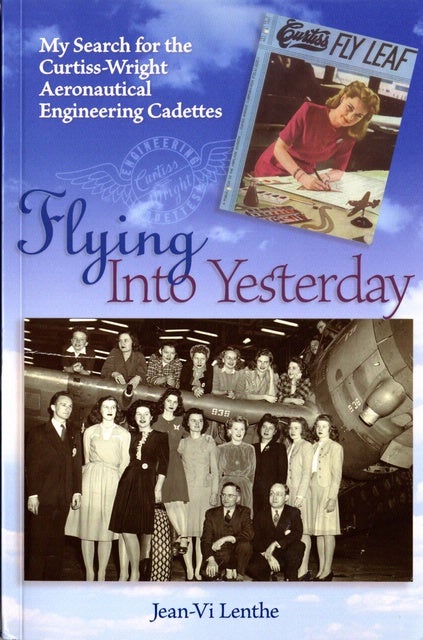
Read the full article at:
http://blog.nasm.si.edu/aviation/meet-the-curtiss-wright-aeronautical-engineering-cadettes/
However I thought I should Google what an aeronautical engineer does as I realised that my mind's ramblings was being sidetracked from the task of assisting young learners in finding placements for their work experience. Thus I discovered the following site:
http://www.prospects.ac.uk/aeronautical_engineer_job_description.htm
It seems that my student's job may have more regular hours than my original imaginings, but I shall interview her about her work experience when she returns from school holidays. You see flexibility/ part-time hours/ anticipating how your work hours will affect your home-making and child-bearing responsibilities is vital to choosing a career.
In planning my sculpture series I decided to compare each figure to a male bird that displays unusual behaviour, that normally corresponds to female roles in today's society. For example, many people seem to rate a woman's home-making skills as attractive qualities in a mate and somehow the concept of airline food contradicted society's perception of beautiful china and a well-laid table as being a sign of competent housewife skills.
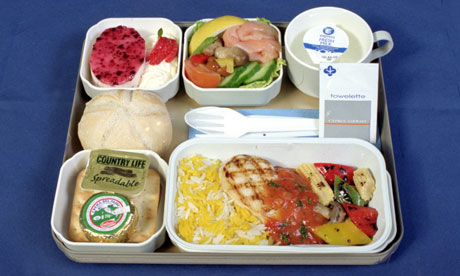
Image from: http://www.theguardian.com/lifeandstyle/wordofmouth/2011/jul/04/airline-food-flights-of-fancy
Image From: http://www.airliners.net/aviation-forums/trip_reports/read.main/244659/1/
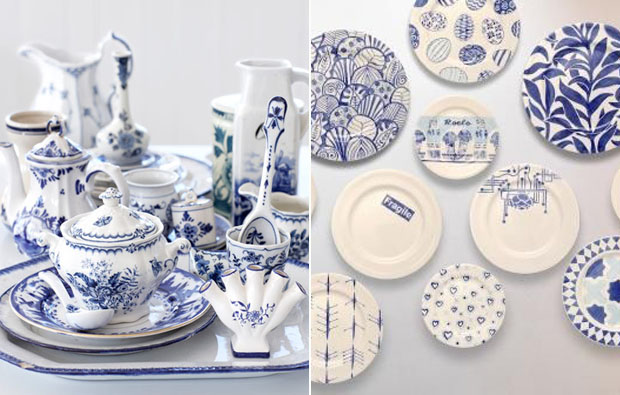
Image from: http://www.pocketfulofdreams.co.uk/2011/04/royal-wedding-fever-part-2-regal-inspiration/
Below are some excerpts on the Australian Bower Bird, which seem to fit with my female air pilot image.
"The star of this unusual menagerie, however, is the male bower bird, an accomplished avian architect that has long fascinated scientists with its remarkably complex courting behavior.
The bowers aren’t nests for raising kids; they are bachelor pads designed to attract and seduce one or more mates. When a female arrives to inspect the bower, the male struts and sings. He hopes to convince her to enter the bower, where mating takes place. The female then flies off to build a nest close by, leaving the male to try to convince another female to join in a romantic tryst.
Each builds its own shape of bower and prefers a different decorating scheme. A few, for instance, surround their bowers with carefully planted lawns of moss. Others have been known to steal shiny coins, spoons, bits of aluminum foil — even a glass eye — in an effort to create the perfect romantic mood. Some, like the iridescent blue Satin bower bird, the star of Bower Bird Blues, even “paint” the walls of their structures with chewed berries or charcoal. For the male Satin, which builds a U-shaped bower from parallel walls of twigs, the favored color is blue. To decorate its “avenue,” as scientists call it, he collects blue feathers, berries, shells, and flowers. The male then waits, passing time by constantly fine-tuning his structure and rearranging the decorations."
Text quoted: from http://www.pbs.org/wnet/nature/episodes/bower-bird-blues/introduction/2109/
I love this jewellery piece by Lonny Fetchner
Wolf's book is full of insight into the makings of modern society, which is crucial to understanding the world that I am preparing high school graduates from one of the top all girls schools in South Africa. Since I have recieved her book as a birthday gift, I will write a fuller review of her study but for now let me highlight a few key points.
Wolf's study on how graduates select partners was intriguing, as Wolf states that graduate men seek graduate women and often two incomes are required to sustain a families' lifestyle. Time is also saved by outsourcing various tasks such as food preparation to factories and readymade meals.
Senanayake (2014) writes the following in Reviewing Wolf's book:
"According to the statistics brought forth by the author, the return to work of elite females has changed the home life of their families. The women tend to do less unpaid work at home. As of 1978, 16% of American meals were eaten away from home. By early 2000, this was more than 30%. Furthermore, the modern couples have changed the way they parcel out tasks and activities as well. Both males and females even out their work at home together. Also, the leisure times of these professional couples have reduced as they allocate this time for the benefit of their children. Also, the author states that the professional success of these elite women today is due to the opening up of education for females (Figure 6 and 7)." (Senanayake, 2014)


Image from: http://lirneasia.net/2014/02/the-xx-factor-how-working-women-are-creating-a-new-society-part-1/
Thus I realised my plan for this sculpture was covering various aspects- the role of education in selecting a partner; the change in diet and women's role in food preparation and the change in careers available to women. In terms of adding a musical/motion element to the work I am going to try and find one of these ballerina boxes so that the figure turns and plays a tune- I think "Somewhere over the Rainbow, way up high" seems appropriate.
For one dollar: a perfectly perfect ballerina jewelry box. The little thing spins while "Somewhere Over the Rainbow" plays. Saucy has a plan for that entire little mechanism
Image and text from: http://www.saucysprinkles.com/2010/05/one-day-of-junkin.html
Technical note: After assessing the scale of my sculpture I realised that I will have to place something else as a side feature in the ballerina's place.
Some more Reference images for my porcelain figure:
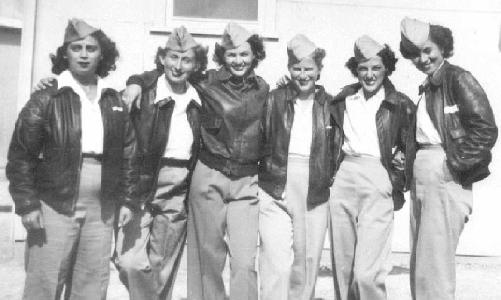
"WASPs flew approximately 60 million miles
and suffered 38 fatalities, or 1 to about 16,000 hours of flying.
25,000 women applied for flight training,
1,830 were accepted, and of those, 1,074 received their wings." - Christina L. Esparza
Image Reference: Esparza, C. (n.d.). U.S. Military HONORS! - Page-05. [online] Militaryhonors.sid-hill.us. Available at: http://militaryhonors.sid-hill.us/honors/hon-05.htm [Accessed 17 Jul. 2014].
Images Below from: Womenofwwii.com, (n.d.). Women of World War II - Photos of WASP Aviators. [online] Available at: http://www.womenofwwii.com/armywasps.html [Accessed 17 Jul. 2014].

Four members of the United States Women's Airforce Service Pilots (WASPs) receive final instructions as they chart a cross-country course on the flight line of U.S. airport.

WASP pilot Anita Paul.
WASP pilot Anita Paul.

WASP pilots ready to fly.

WASP pilots ready to fly.


Harlingen Army Air Field, Texas--Elizabeth L. Gardner of Rockford, Illinois, WASP (Women's Airforce Service Pilot) pilot, takes a look around before sending her plane streaking down the runway at the air base.
PAPER PLANE INSPIRATION
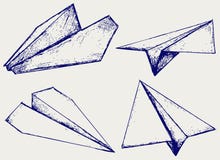
http://www.dreamstime.com/royalty-free-stock-photography-paper-planes-image26513687
Bibliography:
Cochrane, D. (2013). Meet the Curtiss-Wright Aeronautical Engineering Cadettes | AirSpace. [online] Blog.nasm.si.edu. Available at: http://blog.nasm.si.edu/aviation/meet-the-curtiss-wright-aeronautical-engineering-cadettes/ [Accessed 11 Jul. 2014].
Esparza, C. (n.d.). U.S. Military HONORS! - Page-05. [online] Militaryhonors.sid-hill.us. Available at: http://militaryhonors.sid-hill.us/honors/hon-05.htm [Accessed 17 Jul. 2014].
Pbs.org, (2014). Bower Bird Blues - Introduction | Nature | PBS. [online] Available at: http://www.pbs.org/wnet/nature/episodes/bower-bird-blues/introduction/2109/ [Accessed 11 Jul. 2014].
Senanayake, L. (2014). The XX Factor: How working women are creating a new society (Part 1) » LIRNEasia - a regional ICT policy and regulation think tank active across the Asia Pacific. [online] Lirneasia.net. Available at: http://lirneasia.net/2014/02/the-xx-factor-how-working-women-are-creating-a-new-society-part-1/ [Accessed 11 Jul. 2014].
Wolf, A. (2013). The XX factor. 1st ed. London: Profile Books.
Womenofwwii.com, (n.d.). Women of World War II - Photos of WASP Aviators. [online] Available at: http://www.womenofwwii.com/armywasps.html [Accessed 17 Jul. 2014].




No comments:
Post a Comment